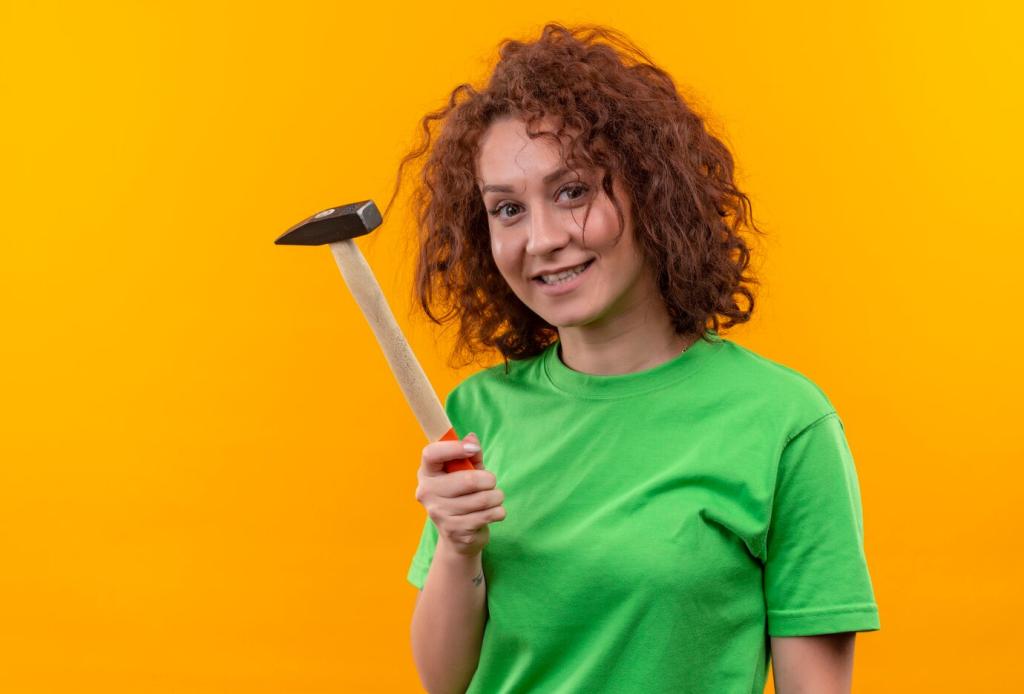Gentle Power: Low-Impact Cleaning Tools for Furniture
Why Low-Impact Tools Preserve Furniture for Generations
The science of microfiber matters
Split-fiber microfiber multiplies surface area, creating capillary and electrostatic effects that trap dust without scratching. It reduces detergent needs, keeps finishes clearer, and leaves fewer streaks on lacquer, veneer, and glass inlays. Share your favorite microfiber weave in the comments.
Soft-bristle detailing brushes save finishes
Horsehair and ultra-soft boar bristles whisk dust from carvings, rattan, and seam lines without cutting into delicate coatings. Light wrist movements and short passes are key. Avoid stiff nylon near shellac or French polish. Tell us where soft brushes helped your pieces most.
Adjustable-suction HEPA vacuums prevent re-deposition
A vacuum with upholstery tools, felt edging, and variable suction captures abrasive grit that cloths might push around. HEPA filtration prevents fine dust from resettling. Use cross-grain passes and lower suction on loose weaves. Subscribe for our upcoming vacuum attachment comparison.
Core Kit: Tools That Work Hard Without Being Harsh
Choose the right microfiber weaves
Plush microfibers excel at dusting wood without swirls, waffle weaves lift spills efficiently, and suede weaves buff lacquer to a glow. Color-code cloths to prevent cross-use. Wash without fabric softeners to preserve grab. What colors map best to your rooms?
Lambswool and electrostatic dusters as first line
Lambswool dusters carry natural lanolin that helps attract and hold dust. Electrostatic synthetic wands perform similarly and reach high shelving. Roll and lift rather than swipe hard. Comment if you prefer natural or synthetic and why your furniture responds better.
Fine-mist sprayers and foaming pumps control moisture
A quality fine-mist sprayer lays down microdroplets, protecting veneer and joints from swelling. Foaming pumps extend dwell time with less liquid, reducing tide marks. These low-impact tools deliver precision that hands alone cannot. Subscribe for our nozzle-size test results.
Felt-lined upholstery nozzles and crevice tools
Use felt-lined nozzles to gently glide over textiles while capturing embedded grit. Add a mesh screen over the tool to safeguard fragile weaves and tufting. Work in short, overlapping strokes. Share your fabric type, and we’ll suggest an ideal low-impact routine.
Low-pressure steam with microfiber bonnets
On colorfast, sealed fabrics, low-pressure steam loosen soils so the bonnet collects them without scrubbing. Always pre-test in a hidden spot. Keep the tool moving and the nozzle back from the surface. Want a pre-test checklist? Comment, and we’ll send a concise guide.
Rubber pet-hair tools that actually work
Natural-rubber squeegee brushes and gloves gather hair into clumps through static attraction. Follow with a silicone lint roller to finish. This low-impact combo avoids aggressive brushing that can fuzz nap and pills. Share before-and-after photos of your most challenging cushions.

Caring for Wood, Veneer, and Delicate Finishes
Before dusting baseboards or mopping nearby, lift furniture onto felt sliders or glide sheets to avoid scuffing feet and floors. Lift—never drag—heavy pieces. Place a breathable drop cloth beneath. Subscribe for our printable checklist on safe furniture moves and tool setup.



Care Routines, Storage, and Tool Hygiene
Assign specific colors to zones and materials—blue for wood, green for upholstery, white for leather. Keep a small legend in your caddy. Consistency prevents cross-contamination. Want our printable map template? Ask below, and we’ll share a subscriber-only download link.
Care Routines, Storage, and Tool Hygiene
Launder microfibers cool, skip fabric softeners, and air-dry to protect split fibers. Comb lambswool to recharge; rinse rubber tools; dry brushes bristles-down. Clean tools mean gentler contact and better results. Share your laundering setup for tailored, low-impact maintenance tips.
Stories From Homes That Chose the Gentle Way
The walnut sideboard that stopped hazing
A reader swapped paper towels for suede microfiber and added a lambswool duster. Within weeks, micro-hazing vanished, revealing a deeper glow. No polish—just better tools. Share your heirloom story, and we’ll help design a low-impact routine that honors its finish.
A conservator’s weekend routine at home
A museum conservator told us she uses horsehair brushes, adjustable-suction HEPA vacuuming, and fine mists—never melamine sponges on shellac. Her motto: move soil, not finish. Want her five-minute checklist? Subscribe and say “conservator” in the comments to get it.
New pup, no problem—pet hair tamed
A new owner battled couch fur until switching to a rubber glove and felt-lined crevice tool. Hair corralled fast, fabric stayed smooth, and cleaning became weekly, not daily. Add your pet-hair challenge below, and we’ll suggest the gentlest tool path forward.
